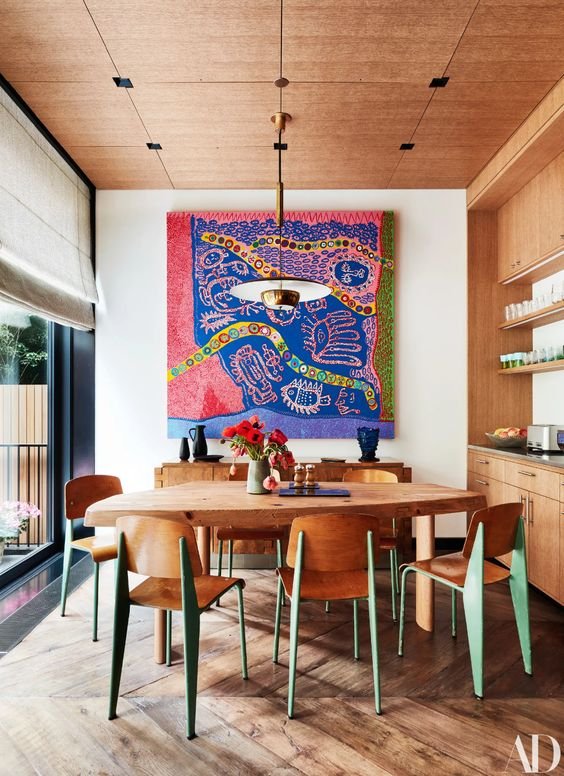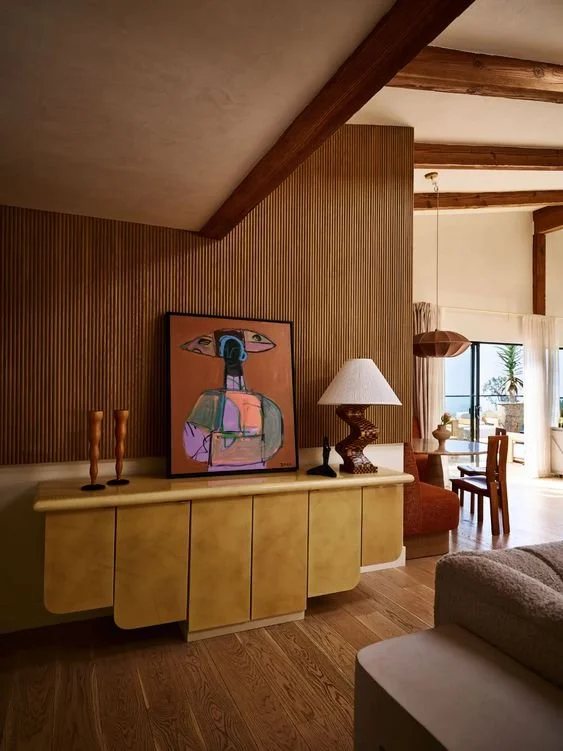An art buyers guide to collecting
Starting to collect art can be an exciting and rewarding experience. Ultimately, the art you choose for your own home has to speak to you alone – but to find art that really works with your interiors, can be tricky. And in my opinion, until the art is hung at the end, a space just doesn’t feel finished. Here are some tips to help you get started:
#1 Educate yourself:
Knowing how to choose art for your home is part gut-instinct, part learning. Learn as much as you can about art and different artists, styles, and mediums. Attend exhibitions, galleries, museums, and art fairs. Reading books and articles on art can also help you develop a deeper understanding of the art world.
#2 Determine your budget:
Art can range from inexpensive prints to expensive masterpieces. Set a budget for yourself and stick to it. Keep in mind that the price of art can vary depending on factors such as the artist's reputation, rarity of the piece, and its condition.
#3 Define your taste:
Figure out what you like and what you don't like. You don't have to have a specific style or genre in mind, but it's important to have a general sense of what you're drawn to.
#4 Build relationships:
Get to know artists, galleries, and dealers in your area. Follow your favourite artists on instagram. Attend art events and shows to meet people in the art community. Developing relationships can help you gain access to exclusive pieces and insider information.
#5 Start small:
Consider starting with smaller pieces that are more affordable. This will allow you to build your collection over time and to learn more about what you like.
#6 Trust your instincts and don’t compromise:
Ultimately, the art you collect should be something that speaks to you and that you enjoy looking at. And if you are buying a piece of art as a couple who has different tastes, please don’t compromise. If one partner loves a piece and the other doesn’t, let them have their piece and they’ll let you have yours. Or wait to find something else. As soon as you start to compromise on art, you’ll buy something that neither likes enough which will only lead to disappointment. Don't be afraid to trust your instincts and only buy pieces that you love.
#7 Take care of your art:
Once you've started collecting, make sure you take care of your pieces. Have them hung professionally, keep them out of direct sunlight, and depending on the work, avoid touching them with your bare hands, or store them in a safe and secure location.
#8 Now you have the art it’s time to design the space
Art is the most powerful tool in any room, and sets the tone for everything else. In many ways, furniture is relatively transient and doesn’t necessarily last forever, whereas art can often be passed down from generation to generation.
Once you have chosen what you love, use the work to inform the design choices you make it the room.
In fact, starting with an artwork is almost like cheating a little bit, because it gives you an instant focus point and gives you an instant palette. The artwork can be an inspiration for colour, but even more than that, mood.
A large painting can act as an anchor for much of a room. The wall shades should reference the painting without mimicking it. A common misconception is the need to match the colours exactly to a work of art in order to work with it. Instead, be inspired by the painting.
Remember, art collecting is a personal journey, and everyone's tastes and preferences are unique. A work of art needs to speak to you, to move you, to make you dream, to inspire you every day – you need to feel it. So start small, educate yourself, and have fun discovering the art that speaks to you.
How I choose art when designing a room.
Buying artwork for your home shouldn’t just be something to fill a space on a wall. It’s about making a thoughtful selection, that takes into account your personal style, as well as the quality, originality, provenance and value of the piece.
When I am brought on to design a space there are a few things I do at the very beginning - You might be surprised to find out that after the briefing stage the first thing I do is create a new Spotify playlist to set the tone of the space and then I look at artists.
The relationship of an artwork to its space also requires careful consideration to ensure the work is balanced with its surroundings. With a detailed review of floor plans and site visits to understand the space, I can identify key artwork locations and dimensions.
And if the perfect artwork doesn’t already exist I source and collaborate with contemporary artists on custom commissions, tailored specially for your home.
Finally, once the piece has been received, I work with the best installers and lighting experts available to ensure that your artwork is installed professionally.
“Laura worked with me really closely, suggesting ideas that she felt would work in the space as well as what would compliment my personality and taste. She found me incredible designer pieces at great prices, art-work that made my walls pop and rearranged my rooms to make the best of the space I had. I now walk into my bedroom with so much joy, and my room looks like a hotel room! I can't wait to work with her again to help style and re-define the other rooms in my current home... and all my future homes ever!”
- Natasha
To find out more about how I can help you get started collecting art and using it to design your home, get in touch via my contact page or send an email to hello@lauradeane.com


